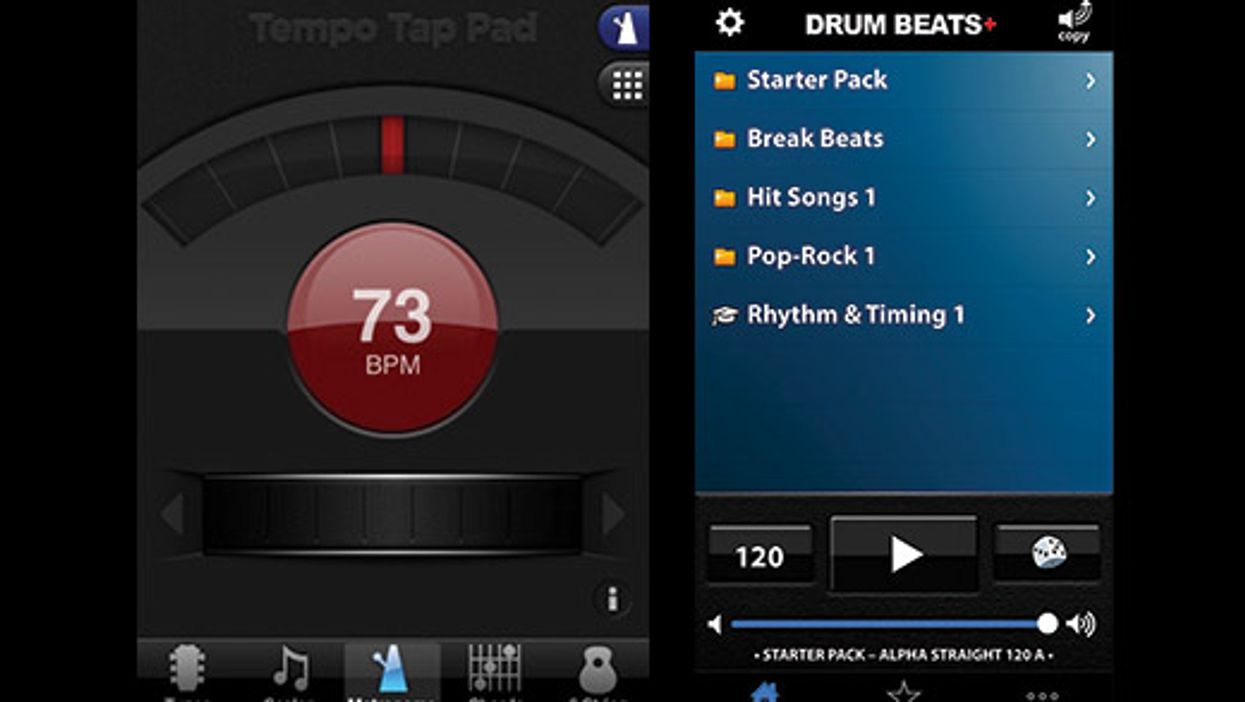My pal John Suhr has a saying: “Practice cures most tone issues." And I believe there is a lot of truth in that statement. Gear is certainly important, but tone really does start with your hands. In this month's column, I'd like to share three simple things you can do when practicing to improve your tone, your feel, and your technique.
Practice with a metronome or drum machine. I can't overstate the importance of practicing guitar with a metronome or, even better, a drum groove. It's a common phenomenon: Guitarists practice songs, lines, solos, and phrases at home—with no timekeeping—and then when they play with a real drummer, things fall apart. We need to play parts in time, focusing not just on the notes and technique, but also on the groove and feel of the part. Locking in with the drums and nailing the feel of a part really is just as important as the notes and chords being played.
Using a drumbeat accomplishes the same thing as a metronome, but I find that a drumbeat is much more fun to play along with. These days, simple metronomes and drum-machine apps are readily available. So make your phone a practice ally! If you are using a metronome, it's cool to think of each click as a quarter-note, but you should also experiment with setting the tempo to half-notes and feeling the metronome as beats 1 and 3, or 2 and 4 (if you are playing in 4/4).
I also recommend occasionally practicing parts behind the beat, right on the beat, and pushing slightly on top as well. When doing sessions, it's not uncommon for producers to ask musicians to lay back or play more on top of the beat, and the only way you'll be ready is if you practice this skill. There's a fine line between dragging or rushing (generally bad), and laying back or pushing (generally good).
Practice standing up. Playing something well in the comfort of your own home while sitting down contentedly and executing the same part while standing and performing are two completely different things. Obviously, it's fine to initially learn and practice parts sitting down.
But if you are going to be performing with a band, it's incredibly important to put that guitar strap on, stand up, and practice like you are going to perform (once again, preferably with a metronome or drum machine). If you'll be singing as well—whether lead or backing vocals—be sure to practice your singing, along with your guitar parts, while standing up.
If you are a member of a band, you will likely get to do all this in rehearsals. But if you are auditioning for a new gig, doing a one-off, sitting in with a band, or headed to a jam night, there's a reason it's in your best interest to get comfortable practicing your parts standing while at home. You don't want the first time you play the parts with a guitar on a strap to also be the same moment you really need to play confidently and comfortably. I've found that I'm at my best when the guitar feels like an extension of my body, and this truly only comes through practice. There is no substitute for preparation, so preparing like you are going to be performing is essential.
Use a looper pedal to make practice fun and productive. I've been enjoying using the looper function in my Line 6 Helix lately—specifically for practicing. And I have the looper function available in most patches on the unit. I can lay down a simple chord progression and then practice improvising and writing melodies, sometimes seemingly endlessly, because I really enjoy it. When working on nailing guitar solos, I'll use the looper in place of a drum machine or metronome by just playing a rhythm guitar part at a tempo of my choosing. When I have the solo confidently under my fingers at a slow or medium tempo, I'll just re-record the rhythm part a bit faster and continue practicing until I've worked the part up to tempo. Often, it's quickest, easiest, and most enjoyable to use my own rhythm-guitar playing via the looper as my accompaniment.
I hope these tips will help you get more comfortable and confident with a guitar in your hands, and in turn help you to make better music. Until next month, I wish you good tone!


















